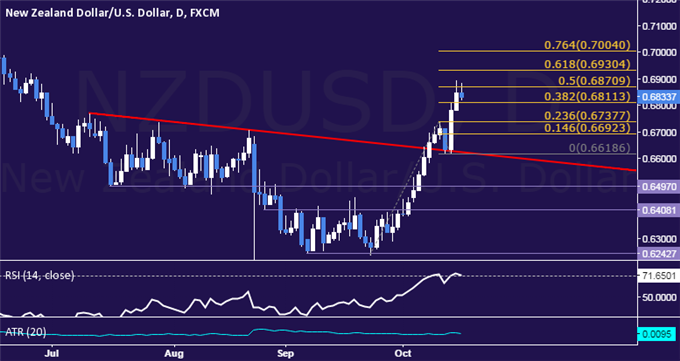To receive Ilya's analysis directly via email, please SIGN UP HERE
Talking Points:
- NZD/USD Technical Strategy: Flat
- Kiwi Dollar on the Offensive as Prices Yield Strongest 2-day Rally Since March
- Waiting for Signs of Reversal to Enter Short in Line with Long-Term Down Trend
The New Zealand Dollar resumed the ascent against its US counterpart, extending to the highest level in nearly four months. The Kiwi returned to the offensive after a single day of corrective losses following a 7-session winning streak, producing the sharpest 2-day rally in seven months.
Buyers now see the next upside barrier at 0.6871, the 50% Fibonacci expansion. A break above this barrier on a daily closing basis opens the door for a challenge of the 61.8% level at 0.6930. Alternatively, a turn back below the 38.2% Fib at 0.6811 – now recast as support – clears the way for a retest of the 23.6% expansion at 0.6738.
The available trading range is smaller than 20-day ATR, suggesting prices are wedged too closely between immediate support and resistance to justify entering a trade from a risk/reward perspective. On balance, the long term trend continues to look bearish. With that in mind, we will wait on the sidelines until an actionable bearish reversal signal emerges.
Losing Money Trading Forex? This Might Be Why.








